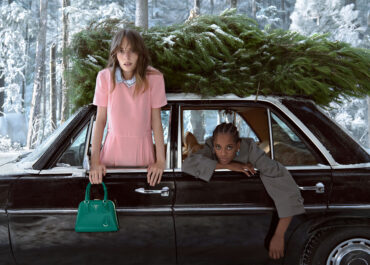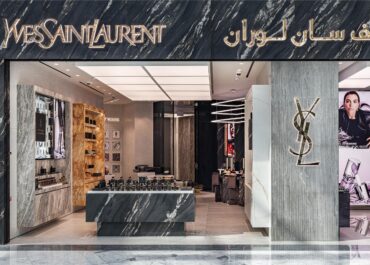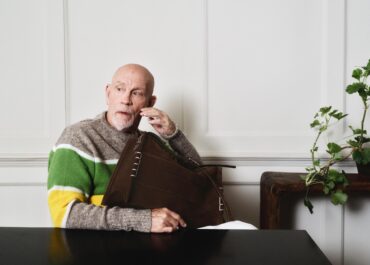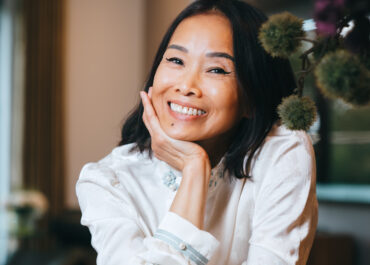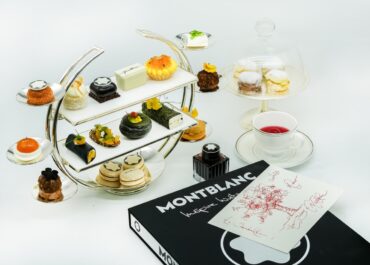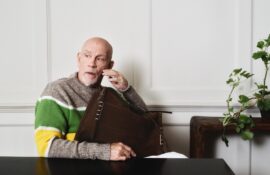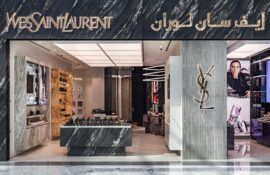Faris Saeed CEO of Diamond Developers discusses The Sustainable City in Dubai and how it is the model of the years to come and the secret to saving the planet

As we look to the future, it becomes more apparent that we all need to take on a much more sustainable way of life in order to preserve our beautiful planet. In the UAE, there is increasing awareness of these issues but there is much work still to be done. There is one project, however, setting an example for the rest of the world with its unique concept and dedication to providing a more sustainable lifestyle. The Sustainable City in Dubai is the Middle East’s first fully-operational sustainable community that delivers measurable outcomes across all of the three pillars of sustainability: environmental, economic, and social. The city is a working blueprint for low-carbon living and ensuring a reduction in carbon footprint through disruptive innovation and transformational societal change.
The Sustainable City houses 500 villas which feature courtyards and many outside spaces in between. Cars are left at the entrance and residents are encouraged to walk or cycle to their homes, or otherwise use the solar-powered buggies supplied. The City created much of its own organic produced and is 100 per cent dedicated to recycling all of its waste. Energy is produced by solar panels and distributed around the city. There is no other fully comprehensive solution like this in the world. The Sustainable has taken solutions from several countries brought them all together without compromising anything to create a community that is feel self-sufficient and environmentally friendly. After five years of running successfully, the city is ready for expansion and with four new Sustainable Cities in the works it’s only a matter of time before this concept changing the way of living in the region forever. To find out more about how this community functions and plans of global expansion, we talk to the CEO of Diamond Developers, the developers behind the city, Faris Saeed. Saeed’s foresight and guidance have led Diamond Developers to shift its focus towards properties and businesses that not only provide economic and aesthetic value but minimise their impact on the environment. With his forward-thinking and leadership of prescient initiatives, Diamond Developers created The Sustainable City and has plans to introduce many more in the region.

Car-free residential clusters
Why do you think it was important to build a sustainable city in the UAE and what were the challenges?
The UAE is our home as a business so naturally, we had to start here but there were many challenges including the harsh climate. Sustainability has become something that isn’t secondary anymore and it is our responsibility to be aware of it and tackle the problem. We built the city on three main pillars of social, environmental and economical awareness.
Social looks at education, wellbeing, arts, culture, gender equality. Economical was concerned with making sure that we built The Sustainable City without any extra cost. This was really important to show people that you can have a sustainable city but there is no extra cost. There are in fact a lot of savings when it comes to operation. From an environmental point of view, we developed a structure – this consists of food, energy, water, products, mobility and waste. And we went into the details of each of these elements.
The planet needs us to look after it and it is an individual responsibility. So from a food point of view, we developed outlets where we can produce our own food. We make honey, we grow fruit and vegetables, we have chickens that produce eggs, we have palm trees from which we produce 60 tonnes of dates a year. This food is available to our residences but the other 95 per cent is sold to the market. This is again sustainable from an economical point of view and it is locally produced which reduces the emissions of transportation.
From an energy point of view, we are the first project of its kind to emit zero energy. In some parts of the city, we produce 50 to 60 per cent of our energy from renewable sources and in Phase Two we produce 100 per cent of the energy needed. We have an institute under construction currently where we will be producing 200 per cent of our energy and the extra energy will be used internally throughout the city. Our energy of choice is solar as we of course have plenty of sunshine in the UAE.
When it comes to water, we have firstly reduced our consumption by almost 30 per cent and we are recycling all of our water and using it within our landscape. We have some initiatives to produce water from air which means we can have drinking water which has been created from humidity. We have many future projects to take this to the next level.
When it comes to products, we are trying to use low-carbon products as much as we can. We try to source locally, but when we do have to import, we try to use recycled materials as much as possible. Our walking track for example is made from recycled tyres and we reuse most of the construction waste that we have to create furnishings within the parks around the city. And at the same time, we are very careful about what we import.
The fifth element is mobility. The Sustainable City is a completely car-free area. We are connected by busses to the nearest metro stations. Within the city, we have buggies that are powered by solar energy available to take residents where they need to be, but we also strongly encourage our residents to be mobile with our walking track, cycling track, horse riding facilities and more. Most of our residents walk around or use bicycles. We dedicated certain areas next to the residential areas that require residents to walk around a maximum of 80 metres to get to their homes. We did extensive research on this distance and it is walkable even in the hottest period of the year. This also satisfies our social objective as creating a car-free area means it is much safer for kids to play outside. At first, the idea of walking was a little bit of a challenge for some people who weren’t used to it, but it became our best selling point. People love the idea because the safety of kids and wellbeing is ultimately most important. Another thing we do is that we encourage the use of electric cars. We have provided charging stations in all of our car parks that are free of use to our residents. This again is powered by our solar energy. We have the highest percentage of electrical cars in Dubai (myself included!).
The last point is waste. We created a fully comprehensive solution that starts from the kitchen. All households in The Sustainable City are provided with four bins so that residents can “sort at source”, which means they will segregate their waste first. Then each bin is sent to a company that recycles it. With the food waste, we create a compost which we use for farming within The Sustainable City.
What sort of challenges does having a hot climate provide?
The UAE’s temperature can be up to or over 50 degrees and we have around eight or nine months where air conditioning is required. Seventy per cent of our energy goes towards cooling and this is why it is an energy-intensive area, compared with other countries where we may not need to produce so much energy as temperatures are cooler. So because of this, it means there is a huge demand for energy used for air conditioning. I believe if we can meet this kind of demand, it means we can do anything!

Solar car park
What more can be done to raise awareness of sustainability in the UAE and what can the rest of the country learn from you?
We have 20,000 school students visiting The Sustainable City every year and we invite everyone to come. We have international companies coming to the city to learn and understand how we function. We receive almost 1,000 international visitors every year. We are open to everyone to show them what we have done here and we are using Sustainable City as a pilot to educate people. Aside from this, we are building an institute that will be offering professional training on sustainability, as well as conferences and events. We are contacted by a lot of people and companies that have new products that they want to test out within The Sustainable City and we invite them to collaborate with us. We are trying to do our best to educate people about sustainability through our experience and knowledge.
How do you think the importance of Sustainability has come to light in recent years?
The whole world is witnessing what’s going on with climate change and the disasters that are happening and it’s threatening all of us. So the world needs to act as one to tackle this challenge. We believe that the entire planet should go in this direction and start building only sustainably – because there really isn’t another option. We are working to develop a standards and rating system which brings together our knowledge and what we have achieved at The Sustainable City and we want to roll this out on a global scale to help others understand how to reduce their emissions without having an impact on cost.

Lake Area
What is your vision for The Sustainable city and would you still like to achieve?
From day one our vision was to build a model and export it to the whole world. We are now building another four sustainable cities in the Middle East and we have raised the bar in all of them, taking into consideration what we have learnt so far. Some are nearly finished, some are still in the design stage but we will be announcing all of the details soon. One of them is double the size of the one we have in Dubai!
Why is it important for us to live a sustainable lifestyle?
Recent studies have shown that if we don’t live sustainably and we keep emitting the same level of emissions as today, by 2050 the temperature of the planet will increase by 3-4 degrees. That would be a disaster for the planet, even one degree is not good. Eventually, all the coastal cities in the world will be flooded and this is where 30 per cent of the world’s population is living. So it has become a need, not a choice. We don’t have another planet so we have to save this one and we have to work fast. We must reduce our existing emissions by fifty per cent in the next ten years. Then we need to reduce the other fifty per cent so that we are carbon neutral otherwise we are finished! It is very scary.
How are you promoting this message in the UAE?
We have a lot of collaborations with Expo next year in which we hope to raise awareness and we have already received a lot of interest from a lot of countries and we look forward to sharing with them our experience.
What can you tell us about the use of plastic and how you are reducing the use of it?
Before COVID-19 we launched a programme that was reducing the use of single-use plastic and it was doing very well. Unfortunately because of the pandemic and issues related to hygiene etc. we have had to put that on hold slightly, but we hope to recover from this and go back to the plan. But we continue to sort and collect all of the plastic in the city and recycle it.

Cycling track
How does the recycling process work?
We do all of the sorting and collection of the waste within the city and fortunately, we own a waste management company, so we take the waste to there, recycle it and create palettes from it which are reused within the city.
How is the city encouraging a healthy lifestyle?
Aside from walking, running, cycling etc. we have the biggest functional medicine clinic in the country. We believe in a holistic approach to medicine and we use only organic origin products. We also created a lot of places within the city the care for the wellbeing of our residents. We have a lot of outdoor and indoor sport including yoga, football, tennis, basketball etc. This helps to keep our residents healthy. We also encourage children to play outside and be social. The way we designed the city directs people to walk, which also encourages them to meet their neighbours and this encouraged them to have active social lives. There is real community spirit within the city and we always encourage people to gather and meet.
What can you tell us about Sanad Village and what you are hoping to achieve with this platform?
Sanad Village started as a small clinic but we realised the need to have a bigger centre for autism as it is a huge issue today that often gets neglected. Almost one in 50 boys are autistic and the numbers are dramatically increasing. So we decided to build this as a facility for autistic kids. We are working in a very holistic way and we are creating comprehensive programmes covering all kinds of therapies as well as vocational and educational programmes. We created training programmes for parents because they need guidance and all of our staff are fully trained to look after the children. Above all, we are in contact with almost 300 centres around the world and we will be choosing around 20 to sign agreements with to hopefully work together with them on research and contribute towards solutions with our holistic medicines. Autism is a global problem that we all really need to be aware of.
What can you tell us about the future development of the city?
We are developing the rating system that I mentioned earlier. It’s very essential and important. We are creating full guidelines and manuals for design, building and operating sustainable cities and we want to roll this out as a resource for the whole world. We want people to learn from what we have done and start building in the way we have done it. It will also allow us to provide training sessions for others. We want to share the feeling of community that we have here with others as this is something that makes our residents feel protected and taken care of and I think it’s one of the most important aspects of the city.
What first interested you in sustainability?
I have been interested in sustainability all of my life but I didn’t have the chance to work around it until our company in real estate progressed. After the crisis of 2008, I started to think in a totally different direction and I decided, even if I was to continue doing what I was doing, it had to be in a sustainable way. This is why we wanted to perfect the project and make sure that our business would be more sustainable than others and today we can see the results of what we have done. We have the highest occupancy of any community in Dubai. Especially since COVID-19 – people love to live here because they feel safe and they like to be able to go outside. We did not feel the lockdown in The Sustainable City! We have seen many residents stay living in the same homes since we opened in 2015 and most of the people who do move out of the city move because they are relocating out of the country.
Are there any countries in the world that inspire you in terms of their approach to sustainability?
When we started working on The Sustainable City we had a lot of visits to countries around the world. We went to California where they have a community called South Village. We took a number of ideas from there. We went to Denmark who also has great ideas about sustainability. In Asia, we visited Japan and South Korea. We did a detailed tour before we started designing and we took elements from all over the world.
What’s the profession motto that you live by?
most dangerous things to use are not setting high targets and falling short, but setting low targets and achieving. This is why we always try to raise the bar and we don’t feel bad if we fall short.


